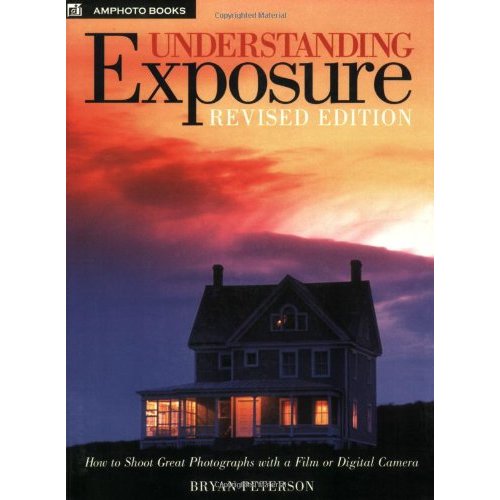Understanding Exposure by Bryan Peterson
Understanding Exposure is an informative, in-depth, and fun book for anyone looking to master photography. Although this book was published nearly 10 years ago, it’s still one of the best out there for explaining photographic principles to beginners and keen photographers alike. With simple, conversational explanations, memorable metaphors, and inspiring, relevant images throughout, this is the perfect read for people looking to expand their photographic knowledge.
If you are serious about developing your understanding photography, this is a classic and a must-have. It will help you improve your skills and understanding by giving you in-depth instructions and illustrative examples. It focusses on the reader’s ability to select the correct exposure, by thoroughly explaining the 3 main elements of photography: ISO, aperture and shutter speed. Have you ever wondered how shutter speed can affect the appearance of your image? Turn to page 70 to find out how to either freeze or blur your subject.
Understanding Exposure is a substantial book at 160 full colour pages. The lessons are supported by Peterson’s vibrant photography, each one highlighting specific points in each chapter. The following chapters are covered:
- Defining exposure: Peterson starts us off with a great overview of what exposure is, and why we need to understand it before we take photographs
- Aperture: Here we learn about how aperture affects the depth of field of an image.
- Shutter speed: how to imply motion using different shutter speeds, and how shutter speed is related to aperture and ISO
- Light: covering everything from lighting angles to using your camera’s in-built light meter
- Filters, Special Techniques & Flash
- Film vs digital: How film and digital vary in terms of ISO/ASA, colour and what is meant by ‘pushing’ and ‘pulling’.
The book also has a handy index to make finding things easy.
Why not visit Amazon where you can get an idea of the book using the ‘look inside’ feature, and also see how Peterson’s photography brings the book to life. There is a 2004 paperback version and an updated, 3rd edition from 2010. If you already switched to digital, check out the kindle edition for just 10.43GBP.
For each lesson Peterson will give you an overview, followed by the general idea and purpose of the technique. He will go on with two excellent examples and at the end give you the most important things to look for in a nice bullet list.
You don’t have to read the book at once. It is well structured and makes it easy to read up on any specific challenge you have. Let’s say you are wondering about how to change your depth of field to create different moods. Just pick up your copy of “Understanding Exposure” and check the index for ‘aperture, depth of field’. You will find simple and directly usable advice for almost any topic of interest in specific situations. Never again feel unprepared when you come to take photographs!
If you decide to read this book, or have already done so, why not share your opinion in the comments below.








